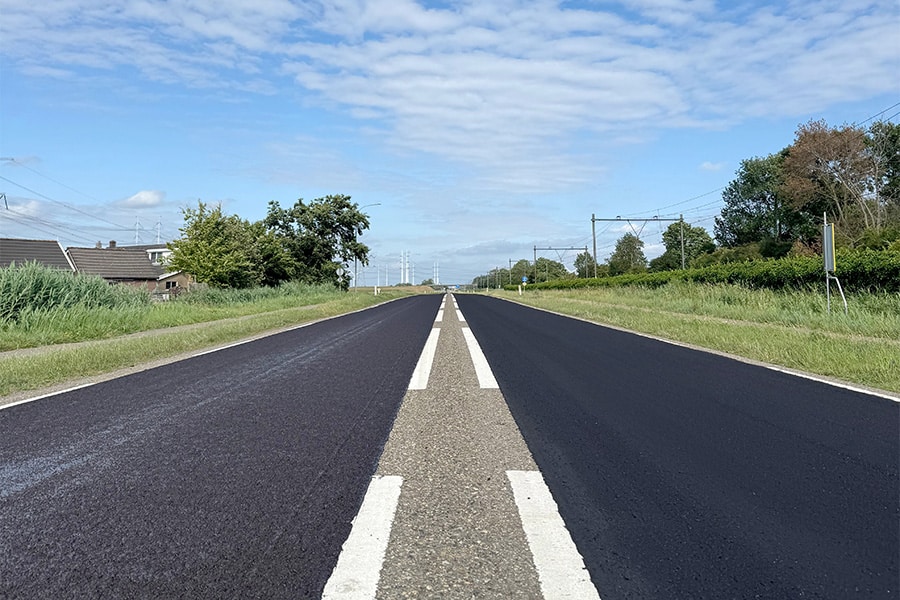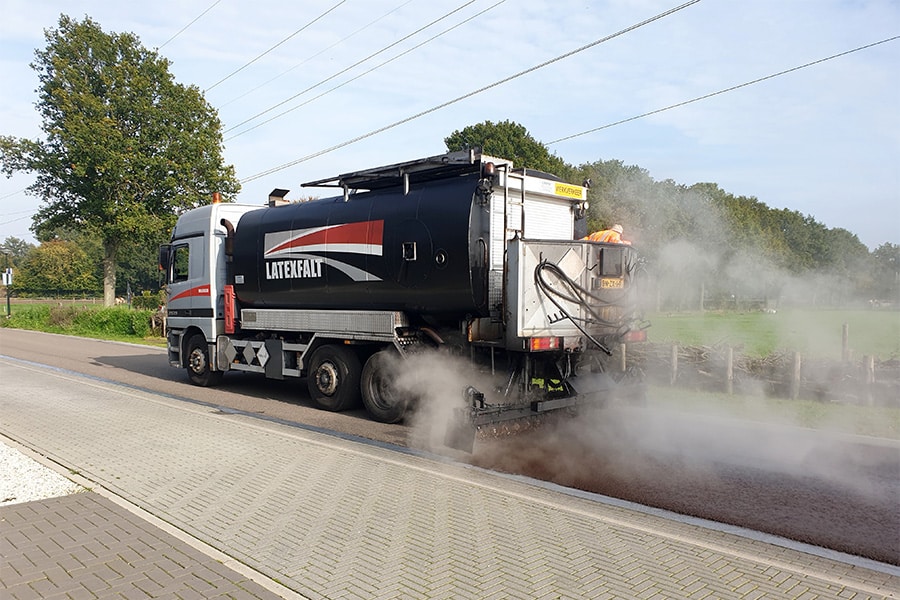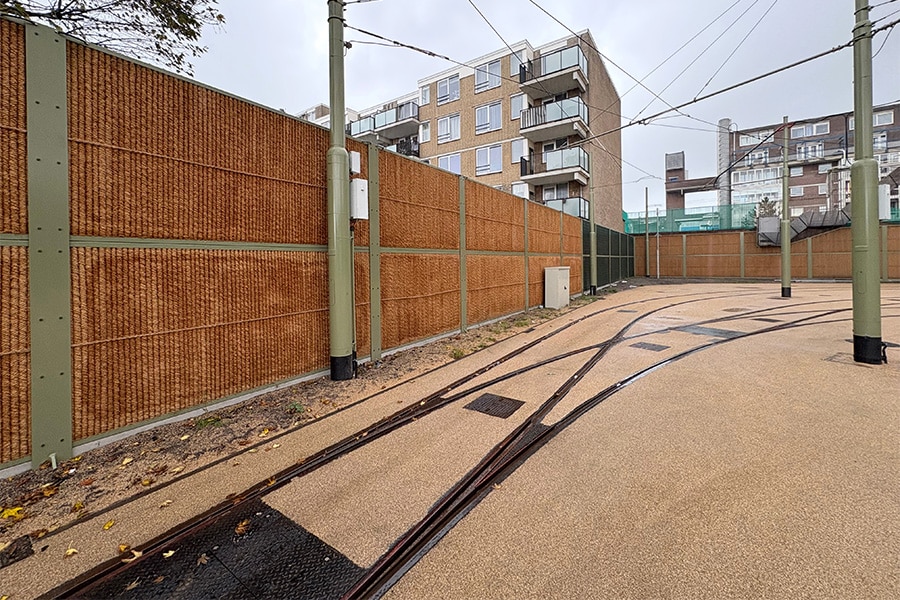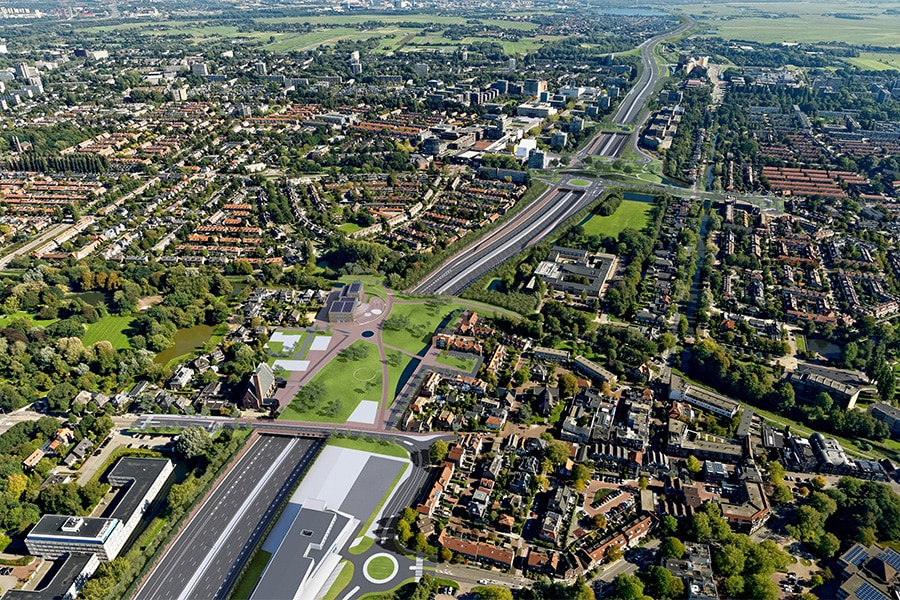
Optimizing the 'Second Ring of Amsterdam'
The Schiphol-Amsterdam-Almere (SAA) road expansion program is the largest road construction project in the Netherlands. The widening of the A9 between Badhoevedorp and Holendrecht is the fifth and final project within the extensive program, and not exactly the least. After all, the "Second Ring of Amsterdam" runs right through Amstelveen. Every effort is therefore being made to keep inconvenience to the surrounding area to a minimum. An interview with Lammert Postma, environment manager at Rijkswaterstaat about the many challenges involved in optimizing the A9.
The reason for the SAA project is multiple. "In the northern part of the Randstad there is plenty of growth," begins Postma. "For example, it was decided in the Spatial Memorandum that Almere will grow to become the fifth largest city in the Netherlands, Amsterdam is facing a substantial inner-city housing challenge, and we are seeing substantial growth in terms of employment around Schiphol Airport. The goal of the SAA program is to facilitate the growth in mobility resulting from the above developments. With a second objective being to better fit the highway where possible, so that the quality of life along the highway improves." And you can see the latter on the A9, which will soon be largely hidden from view in Amstelveen.
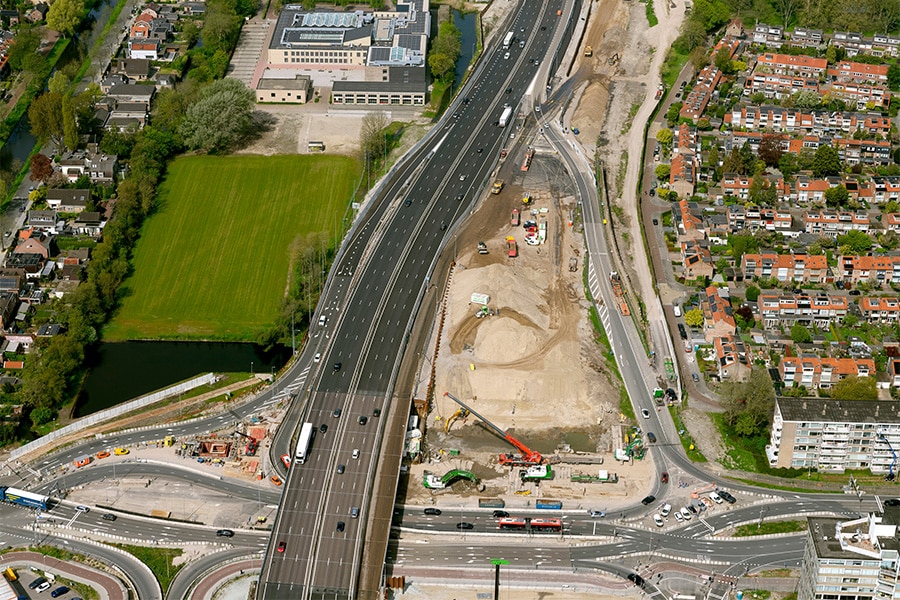
Express lane
Over a length of 11 kilometers, the A9 will be widened from 2×3 to 2×4 lanes plus changing lanes. "We will extend the current interchange lane that now ends from Almere via the A1 at the Diemen interchange through the Gaasperdamertunnel to Ouderkerk aan de Amstel," Postma explains. "Depending on the rush-hour regime, the interchange lane will provide an 'express lane' for through traffic. As a result of that widening, ten engineering structures will be completely demolished and rebuilt in widened form, one engineering structure will be reused and widened (the Schiphol Bridge), we will build a new underpass for the switch lane at the Holendrecht interchange, and we will build one new engineering structure in the form of the 1.6 kilometers of sunken position in Amstelveen. Finally, we are replacing all noise barriers with new higher ones, totaling some 14 kilometers in Ouder-Amstel and Amstelveen. The project is contained in a DBFM contract and awarded to construction consortium VeenIX. That means they are making the design and arranging the pre-financing. In the maintenance phase of 14 years, we set an availability fee in return, so that the combination can pay off the 'mortgage,' so to speak."
Compensation Scheme
The A9 is one of the most important and busiest highways in the Netherlands. "The idea is to keep as many 2×3 lanes open to traffic as possible during construction," says Postma. "Because of the limited space, this involves complex traffic phasing. Such a project also involves a lot of dust, noise and vibrations. Still, we try to keep the livability for residents along the highway bearable. For example, we ensure extensive communication at the neighborhood level, but the contractor also takes a number of nuisance-reducing measures. For example, the piles at the sunken location are not driven but drilled. Sometimes, however, it is impossible to spare residents, such as when demolishing structures or installing sheet piling. For this we have created a compensation scheme that depends on the number of decibels on the facade. This ranges from providing 'noise cancelling' headphones to in some cases even offering a hotel stay."

Salt seepage
What also makes this project particularly complex is the very poor subsoil and the many different polder levels, Postma acknowledges. "Our Spanish contractor sometimes jokingly says 'your underground is absolute hell.' It requires intensive consultation and coordination with many stakeholders, including the Rijnland Water Board and the Amstel, Gooi and Vecht Water Board. In practice, the bottom line is that it sometimes takes a very long time to create a stable earth track. It is also the reason that an underwater concrete floor is being used in the sunken location to exclude saltwater seepage from the outset."
According to Postma, implementation is progressing well. "In Amstelveen we experienced some delays due to corona. Due to downtime and working from home, the design process has taken a little longer, which means that the availability date for the middle section has been moved up from 2026 to 2027. On the east and west sides, however, we are on schedule for the end of 2026. There is currently much to see on and around the A9. The first compartment of the sunken section is already clearly in the making, to the east the foundations for the new structures over the Amstel and Bullewijk rivers are slowly rising, and work on the Schiphol Bridge is also in full swing. There is a lot of interest in the project from the surrounding area. And we are happy to respond. For example, a retired colleague provides regular bicycle tours and we share a lot of information online. People can follow the progress live via various webcams."
